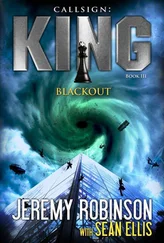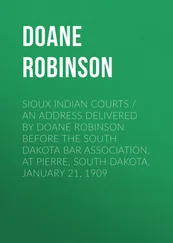Except it doesn’t.
She surprises the attacker and me by rolling to the side at the last moment and kicking the man’s knee. He yelps in pain and jumps back but isn’t deterred. He raises the pipe for another strike but never gets the chance.
My shoulder strikes the man, midspine, as I ram him, lift him off the ground, and then slam him to the roof. There’s a loud crack as all my weight is transferred to the man’s spine via my shoulder. He screams in pain, still alive, but when I stand up, he’s not moving anything below the neck.
I turn to Allenby, who is now on her feet. “I knew you were military.”
She turns for the chopper. “Once upon a time.”
“Better hurry,” I say, pushing her along. “The next person has a gun.”
The helicopter lowers as we approach, allowing us to board by stepping on the skid and climbing in through the side door. Blair helps Allenby inside but leaves me to climb in by myself. As I find my seat and slide the side door shut, bullets punch into the metal where my head had been a moment before.
The pilot takes us up and away, blinding the gunman with a cloud of dust and roof grime. As we ascend, I lean to the window and look down. It’s Manchester, New Hampshire, all right, but I’ve never seen it like this. The streets are alive with people. Vehicles and some buildings are burning. The mob rushes forward. Ahead of them, a line of riot police, each holding a clear bullet-resistant shield, wait.
Molotov cocktails sail through the air, accompanied by rocks, and then bullets. The police respond with tear gas, water cannons, and then bullets of their own. War indeed.
“Hard to believe,” Allenby says.
Not really, I think, except for one detail. While scenes like this have played out all around the world for one reason or another, this is New Hampshire. It’s 90 percent forested, has a culture of holding people accountable for their actions, and the lowest murder rate in the country. How could this level of violence seep into one of the nation’s quietest states? Even more pressing, how can a city I don’t remember visiting be so familiar, and why the hell do I know so much about New Hampshire?
The helicopter races toward the roof of what appears to be a black Mayan pyramid. As we descend, I can see the faint outlines of the tinted windows that make up the building’s flat, forty-five-degree angled walls. At the center of two sides of the building, the smooth slope is divided by what looks like giant staircases, each “step” a story tall, completing the Mayan feel. I count nine levels. The top level is three hundred feet across. Maybe more. The bottom is at least three times that. The building is surrounded by tall pines, and the roof is just below the tree line. Despite its size, the megalithic building would be invisible to anyone on the ground. Not exactly covert since anyone in the air can look down and see it, but the single access road winding through the woods is blocked by a gate. And while I can’t see it, I have no doubt that the entire facility is surrounded by a fence. Anyone interested in the building is going to have a hard time reaching it.
Which begs the question, why am I here?
“You’re not going to assimilate me?” I ask. The pilot, Blair, and Allenby can all hear me over the thunderous rotors thanks to the headsets we’re wearing.
“What?” Blair asks. He’s still shaken up by our experience in Manchester. “I don’t—”
“Resistance is futile,” Allenby says. She slides up next to me and looks out the window. “It does smack of the Borg, doesn’t it? But no worries, the collective isn’t interested in the likes of you.”
I smile at her. “If you were younger and prettier—” I stop as my logical mind puts the brakes on the statement my lack of fear let slip.
Allenby gets a good laugh out of it, though. Slaps my shoulder. “Oh, you.” Her demeanor is casual. Comfortable. I find this strange, but perhaps it’s just a result of being institutionalized in a place where most everyone is afraid of me.
The helicopter touches down on a black landing pad at the center of the roof. As the rotor slows, Allenby slides the door open and hops out. There is no greeting party, just a flat black surface and a halo of pine-tree tops surrounding us. The scent of the deep woods is invigorating. I breathe deeply and step out.
“Follow me,” Allenby says, almost shouting to be heard over the still-slowing rotor blades. I fall in line behind her as we walk across the roof. “Some ground rules. Don’t talk to anyone who doesn’t first talk to you.”
“That’s a strange rule,” I point out. “Kind of old-world parental discipline.”
“It’s just that most people here are working on something, in their heads, even when they don’t appear to be working at all.”
“I see,” I say, but I really don’t. I stop walking.
After a few steps, Allenby notices I’ve stopped. She turns back. “What?”
“Why am I here?”
“To not be there, ” she says, and I get her meaning.
“Anywhere is better than SafeHaven?” I say. “I’m not sure I believe that. From what it looks like, once I set foot inside this building, no one will know I’m here.”
Allenby grins. “And if I don’t tell you?”
“I’m going to run.”
“And get caught.”
I shake my head. “I think you know that’s not what will happen. You have five seconds to tell me why I’m here. Five… four…”
Allenby grunts and stomps her foot. “You’re infuriating. Fine.”
I grin, but also note she didn’t wait until I got to one, or until I started running. She believed me. Trusted what I said. I haven’t been given that kind of respect in a long time, and I appreciate it despite the circumstances.
“It’s a drug trial.” She waves her hand at her head. “For your condition.”
“What if I don’t want to be cured?” I ask. “I’ve seen what fear does to people, and I’m not sure I—”
“Not that condition,” she says. “The other one.”
I’m confused for a moment until I realize she’s talking about my memory. “What if I don’t want to remember?”
She turns away and starts walking. “You do.”
“You’re calling my bluff?” I ask.
“We both know you have a horrible hand,” she says, stopping. A square of rooftop before her comes to life, rising up. A black rectangle, ten feet tall, six wide, emerges from below and stops, looking like a futuristic megalith. And then it opens, revealing an elevator. Allenby steps inside and turns around. With a single raised eyebrow and a matching grin, she says, “Coming?”
* * *
Stepping out of the elevator, we enter a hallway that defies all of my expectations. Given the stark feel of the building’s obsidian surface, I expected something similar to the SafeHaven floor—stark, gleaming white, and brightly lit. Instead, it’s… homey. Warm hardwood floors. A thick, oriental runner down the middle of the hall. End tables with a variety of lamps. “This doesn’t look like a laboratory.”
“It isn’t,” Allenby says. “It’s the residential level.” She starts down the hall. She stops three doors down on the right. “This is your room.”
I feel like I’m in some sort of strange dream, and peek into the room, which is more than a room. It’s an apartment. From the doorway, I can see a kitchenette, living room, and dining area. The furnishing is comfortable. The brushed metal appliances are modern. The décor is casual, almost primitive, with wooden carvings and emotionally charged, modern oil paintings.
I step inside.
I’m drawn inside.
Immediate comfort washes over me. My muscles relax. “How did you do it?”
Читать дальше












